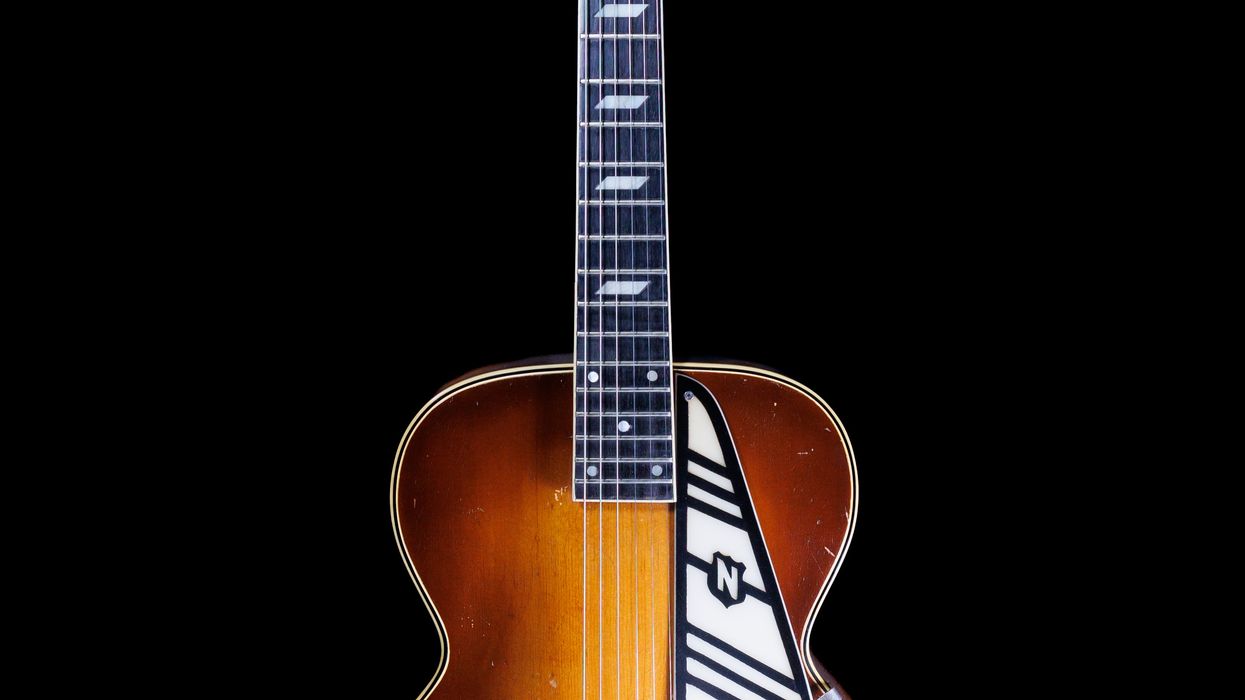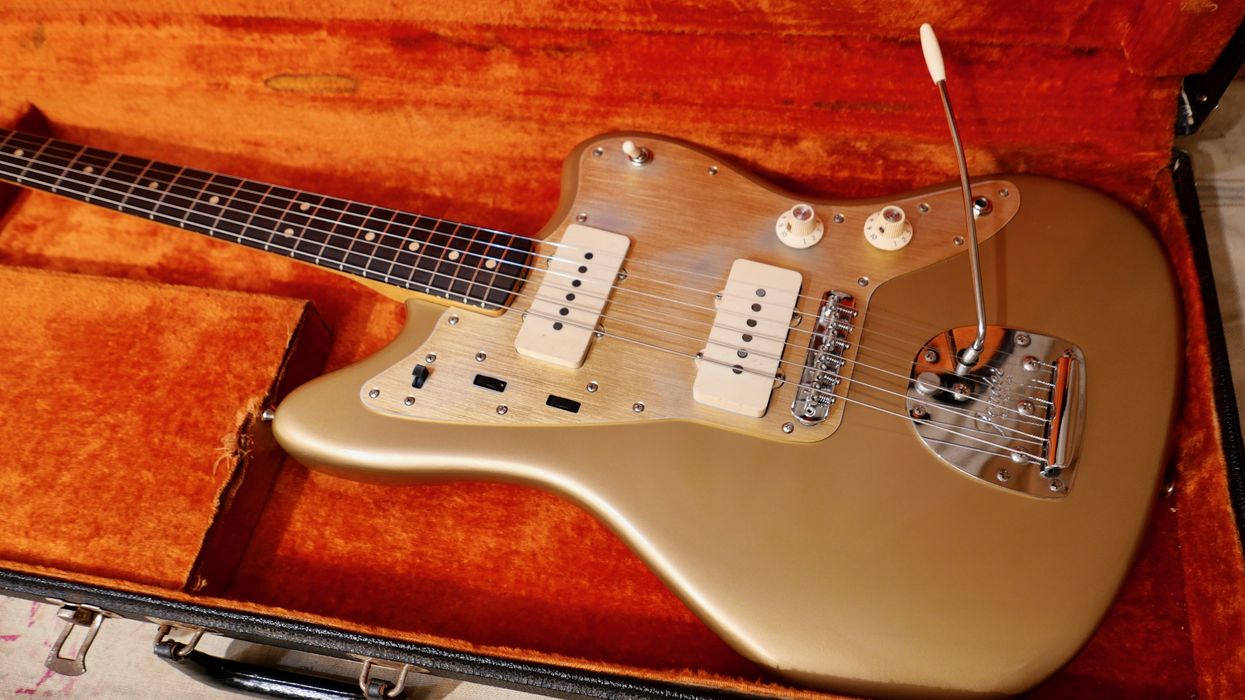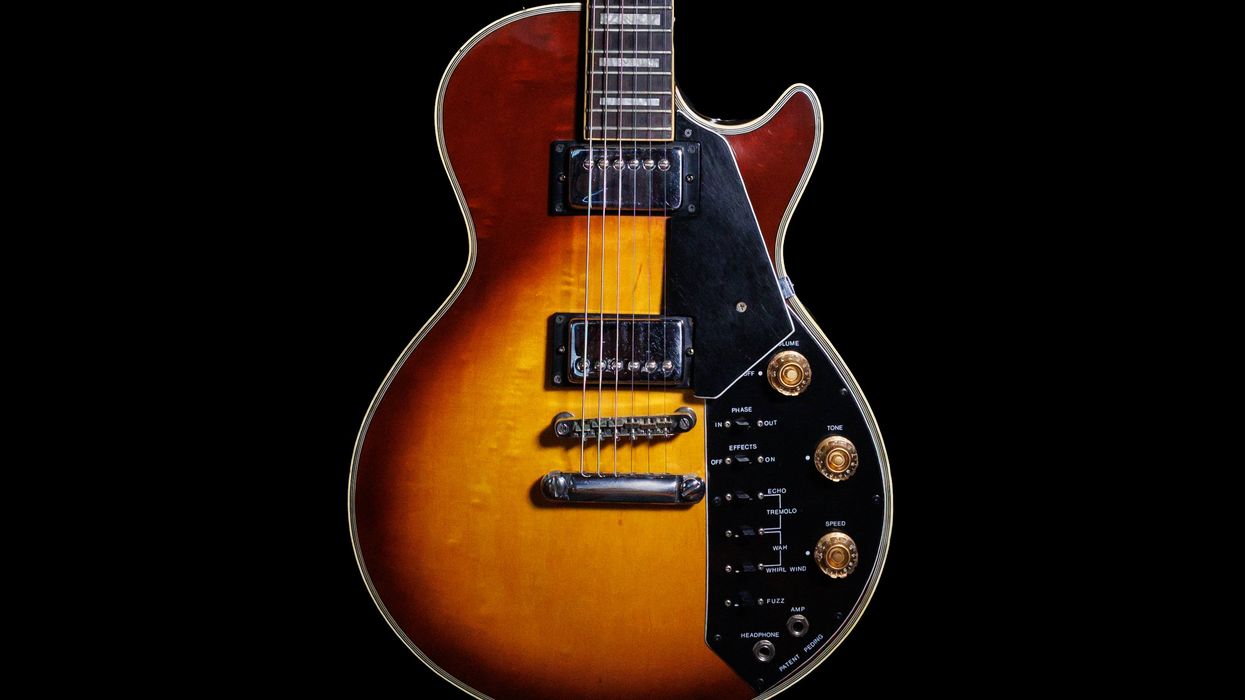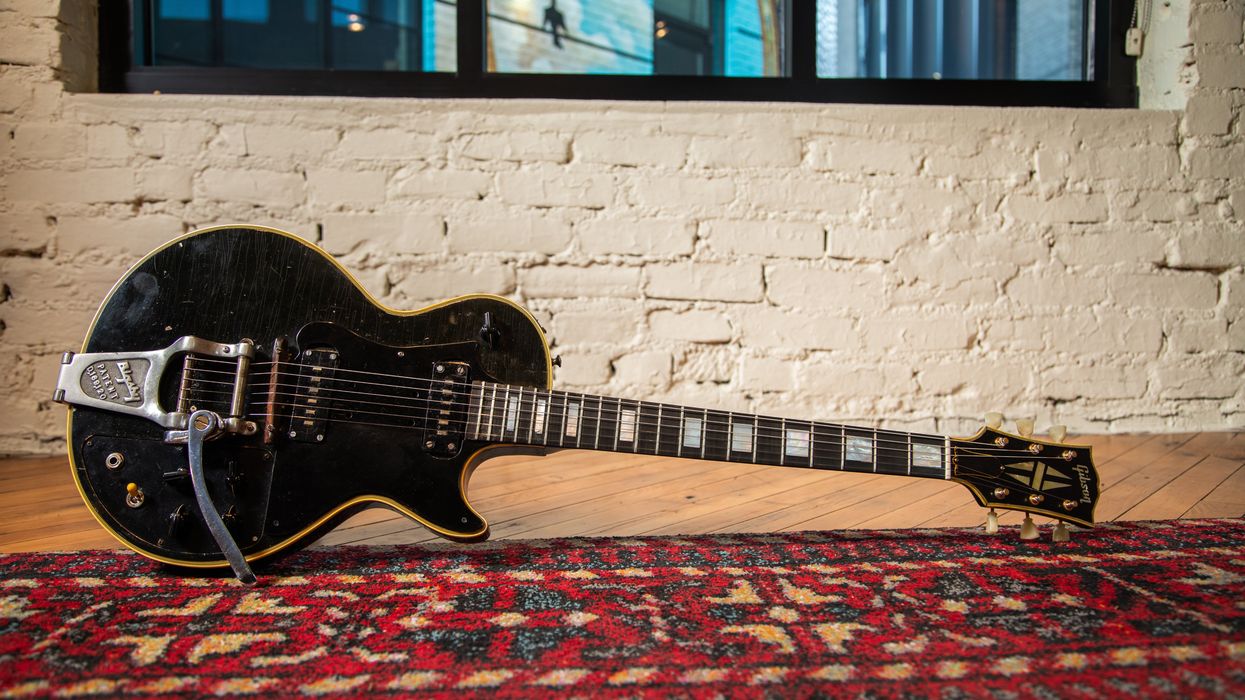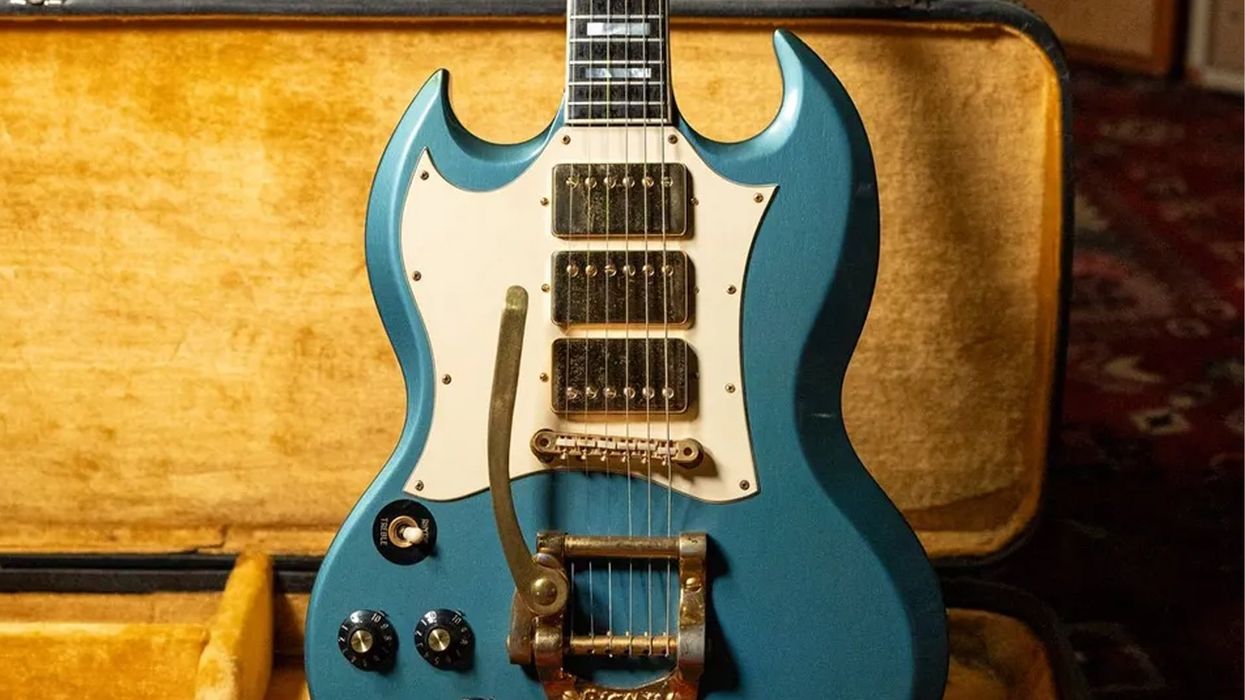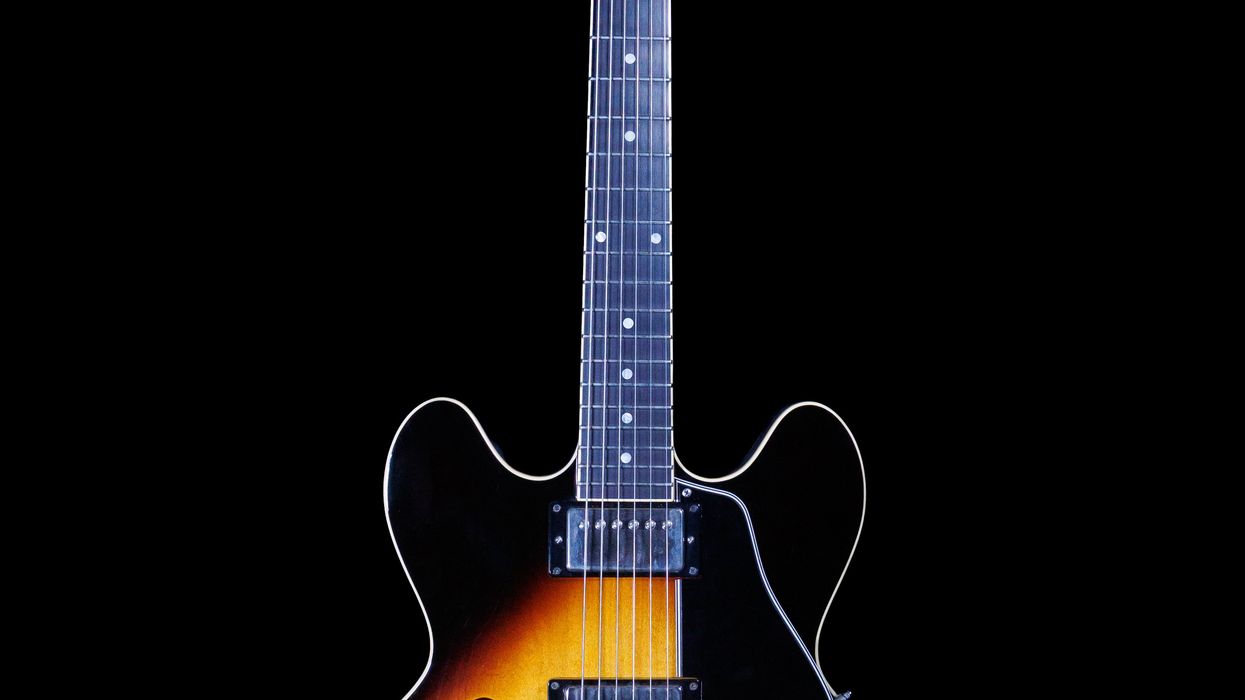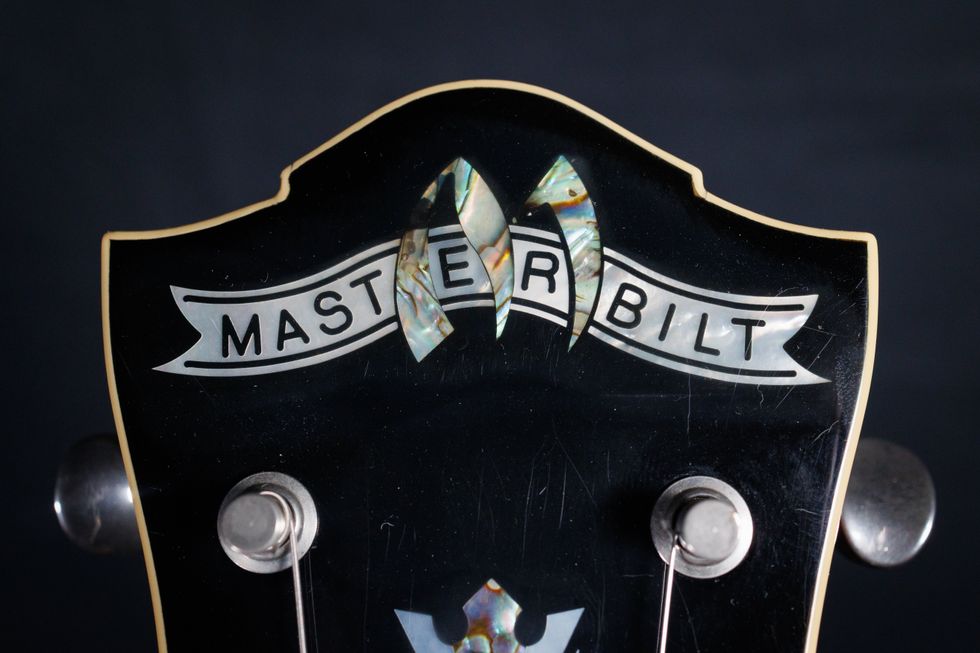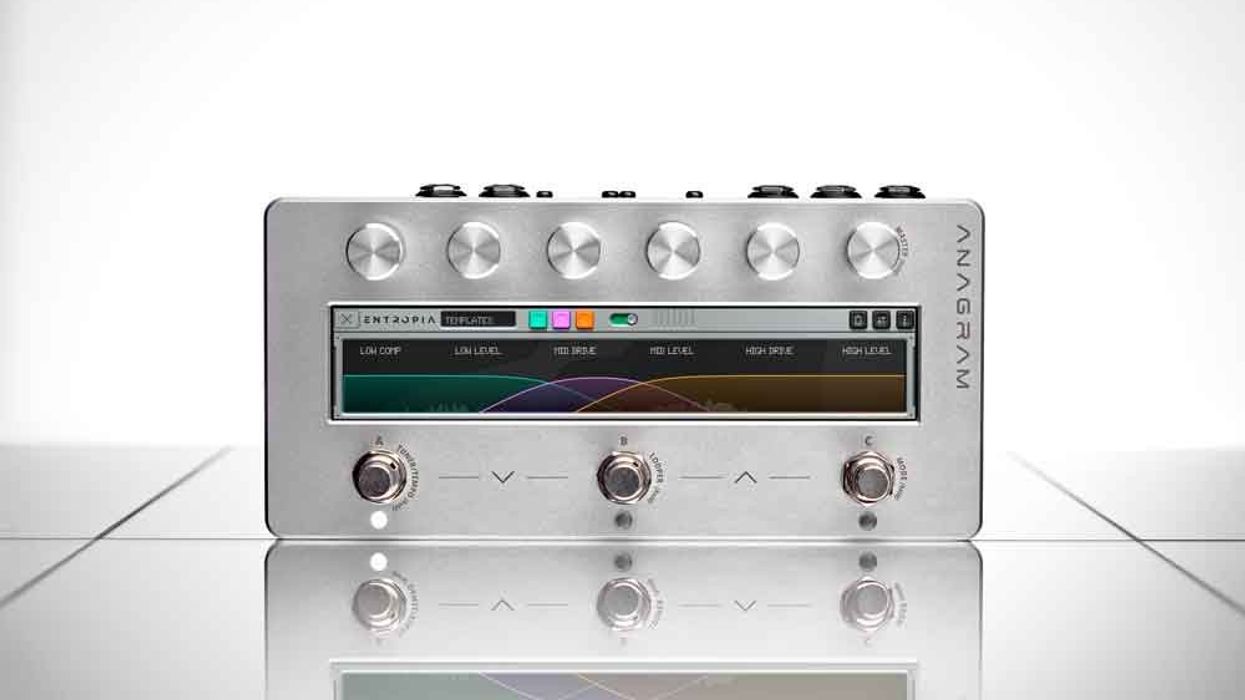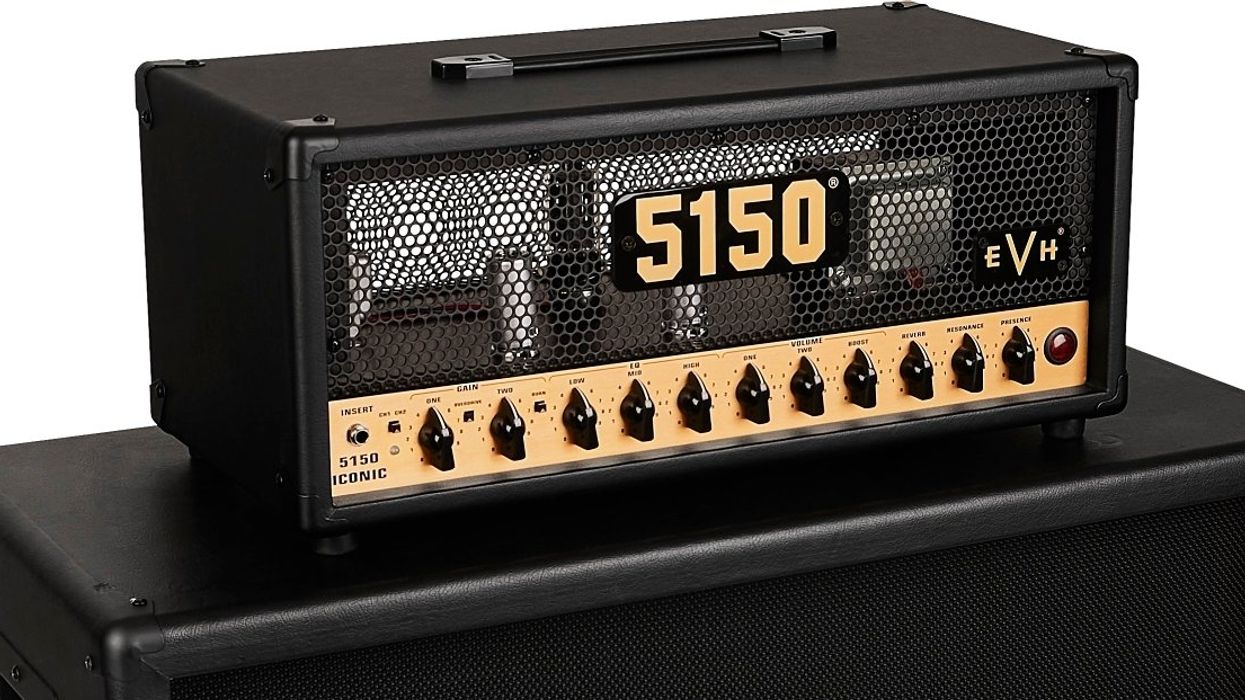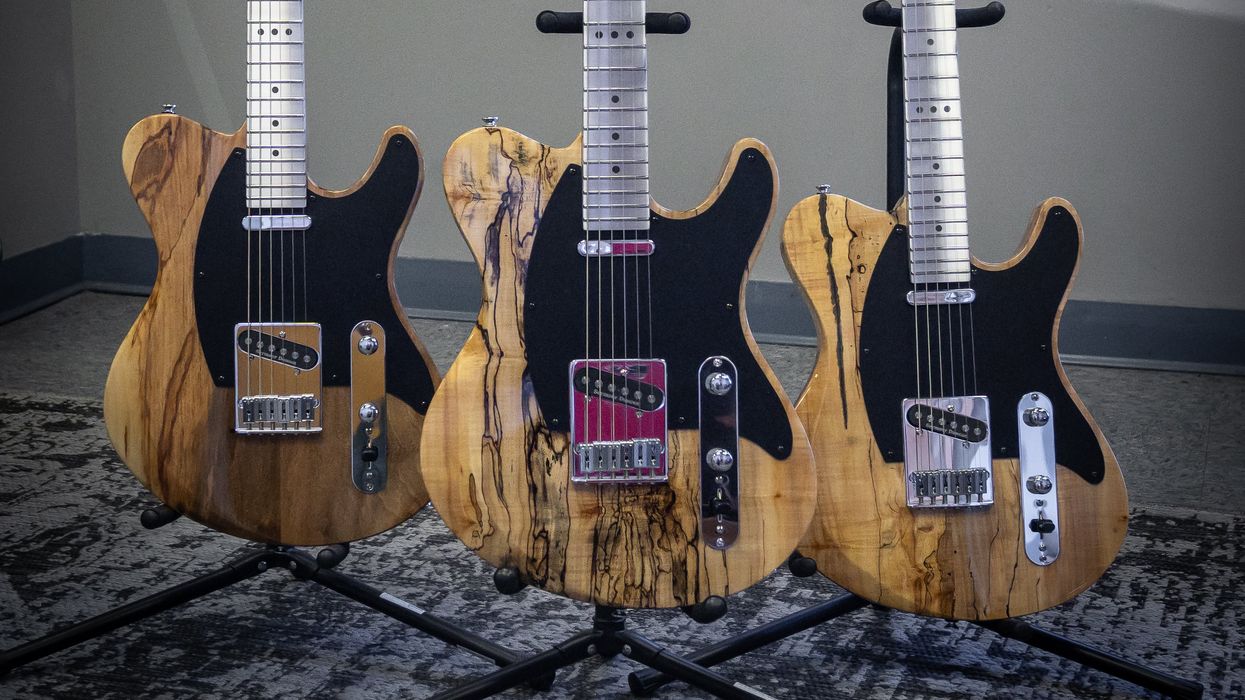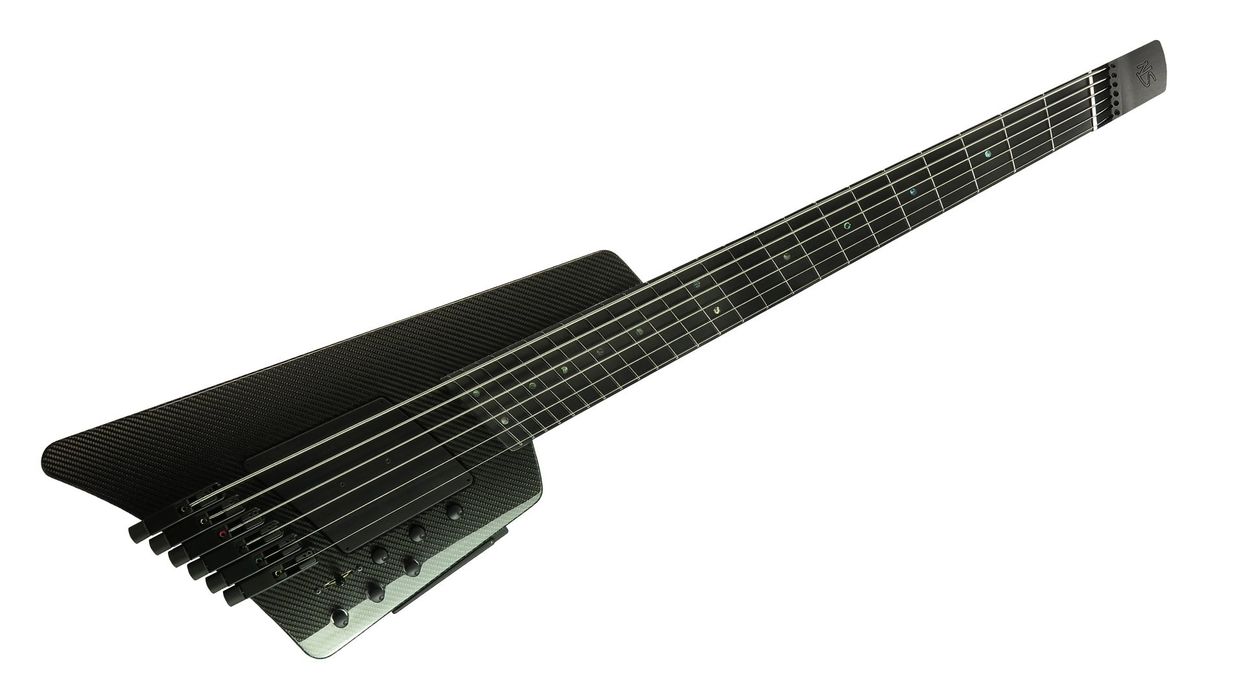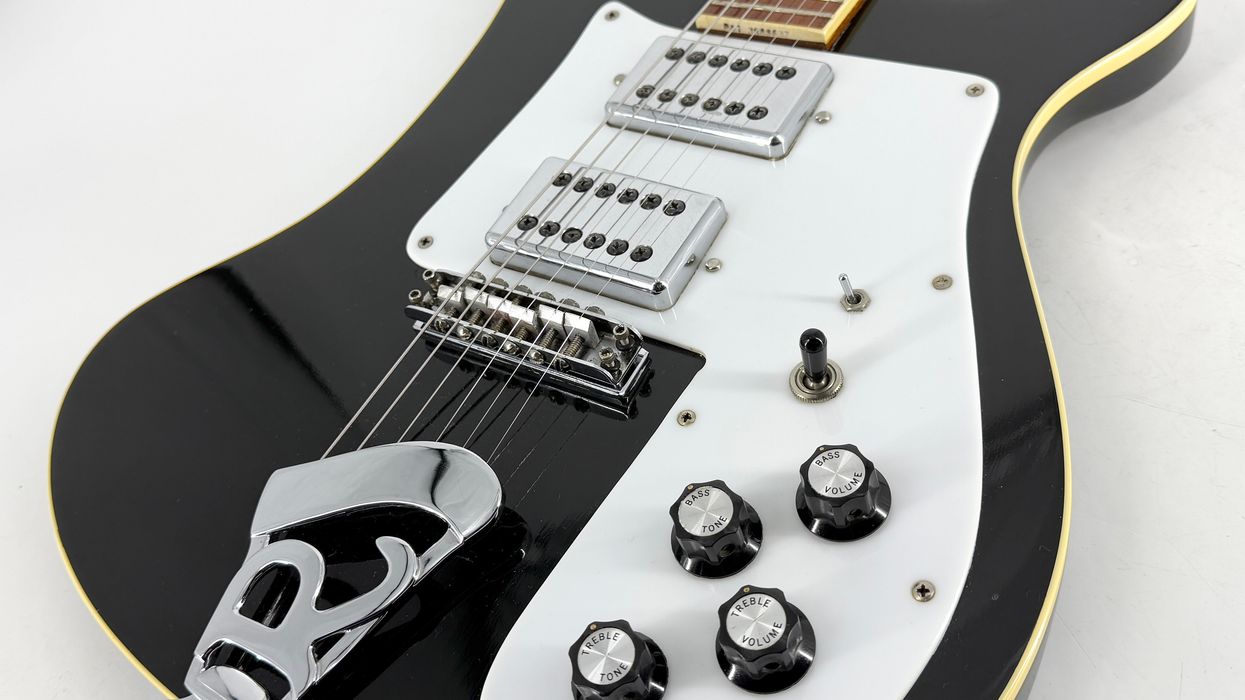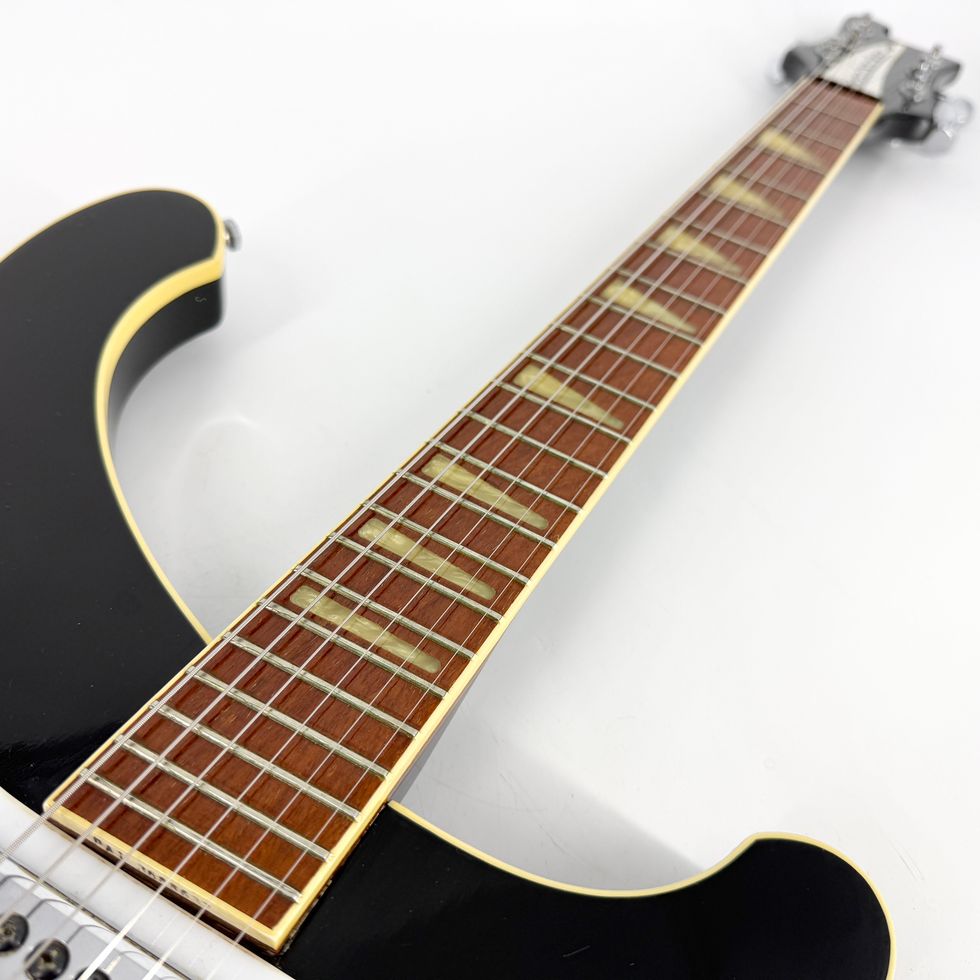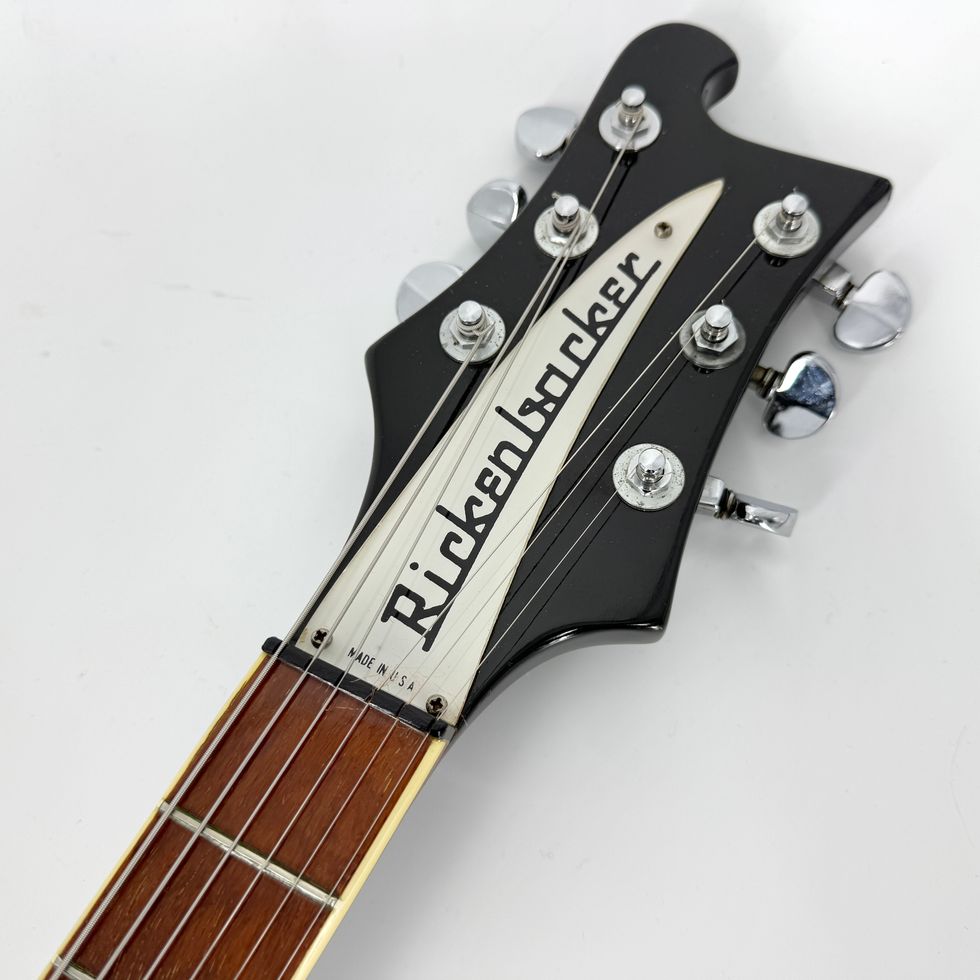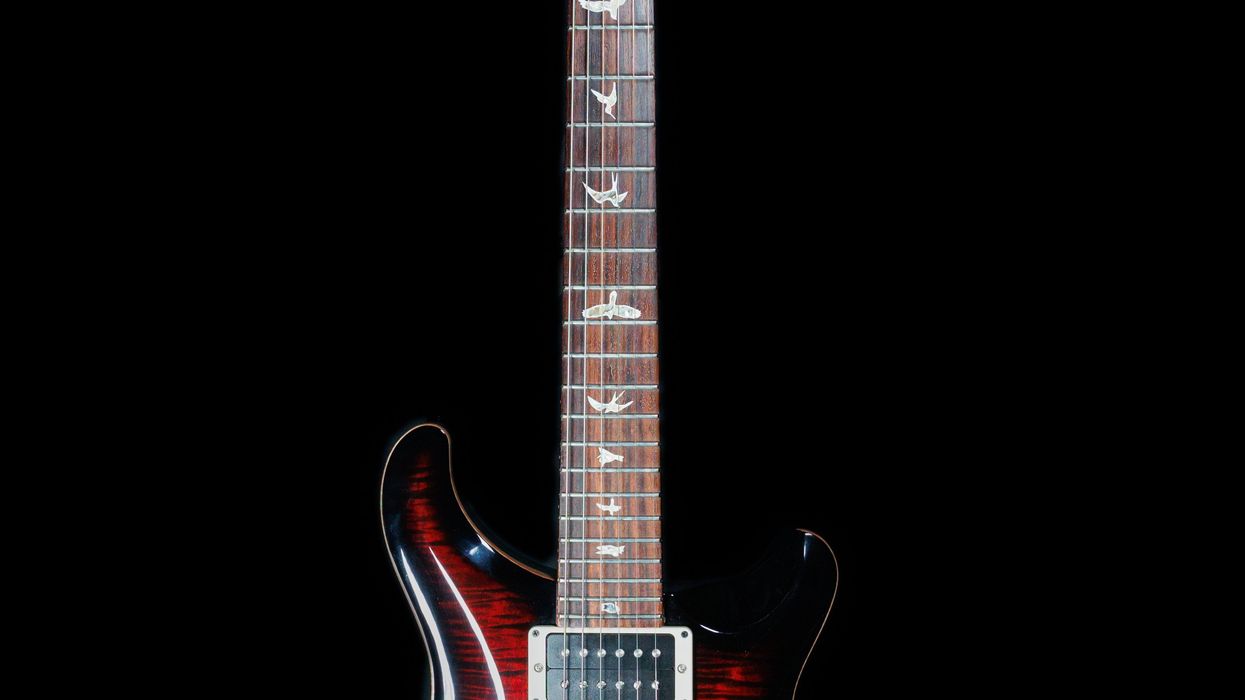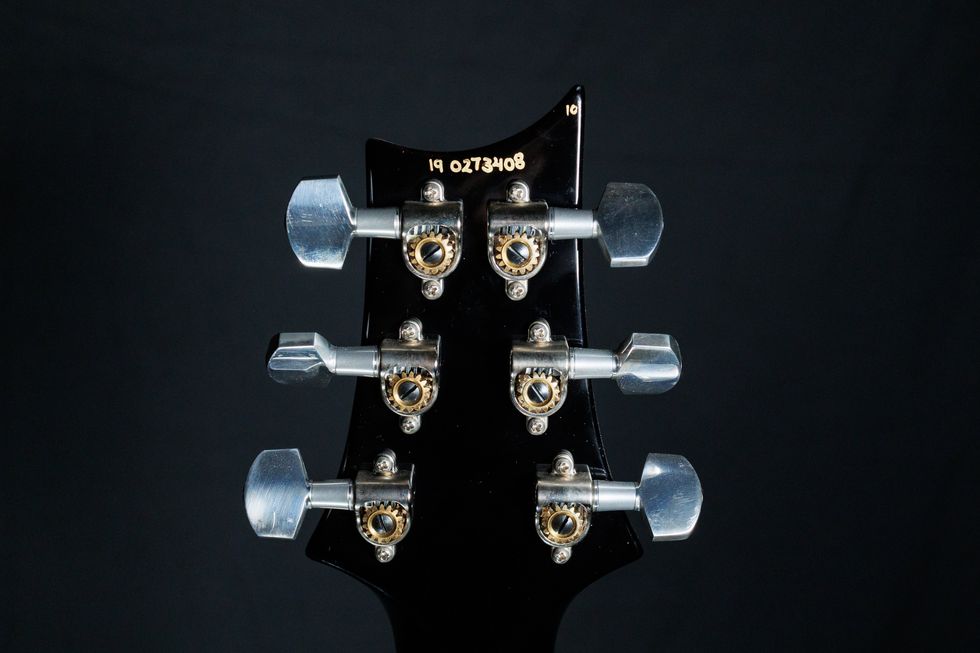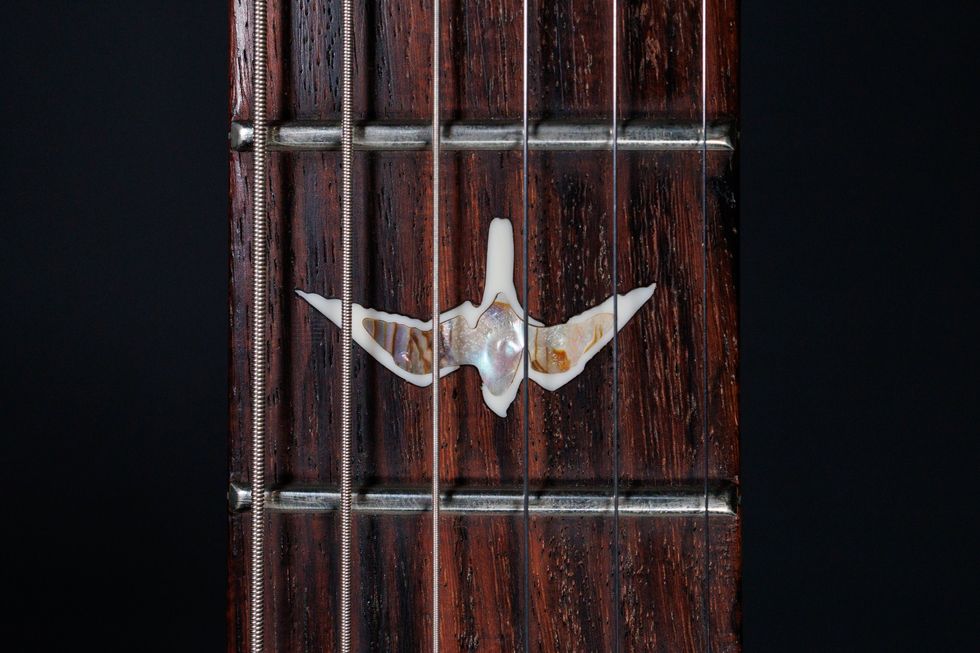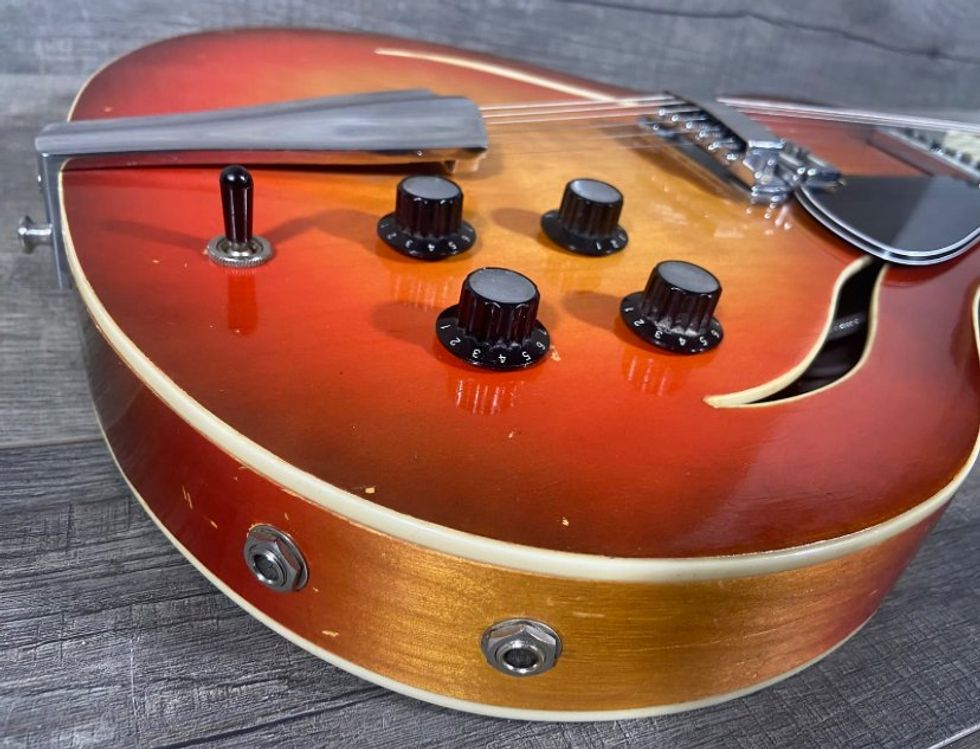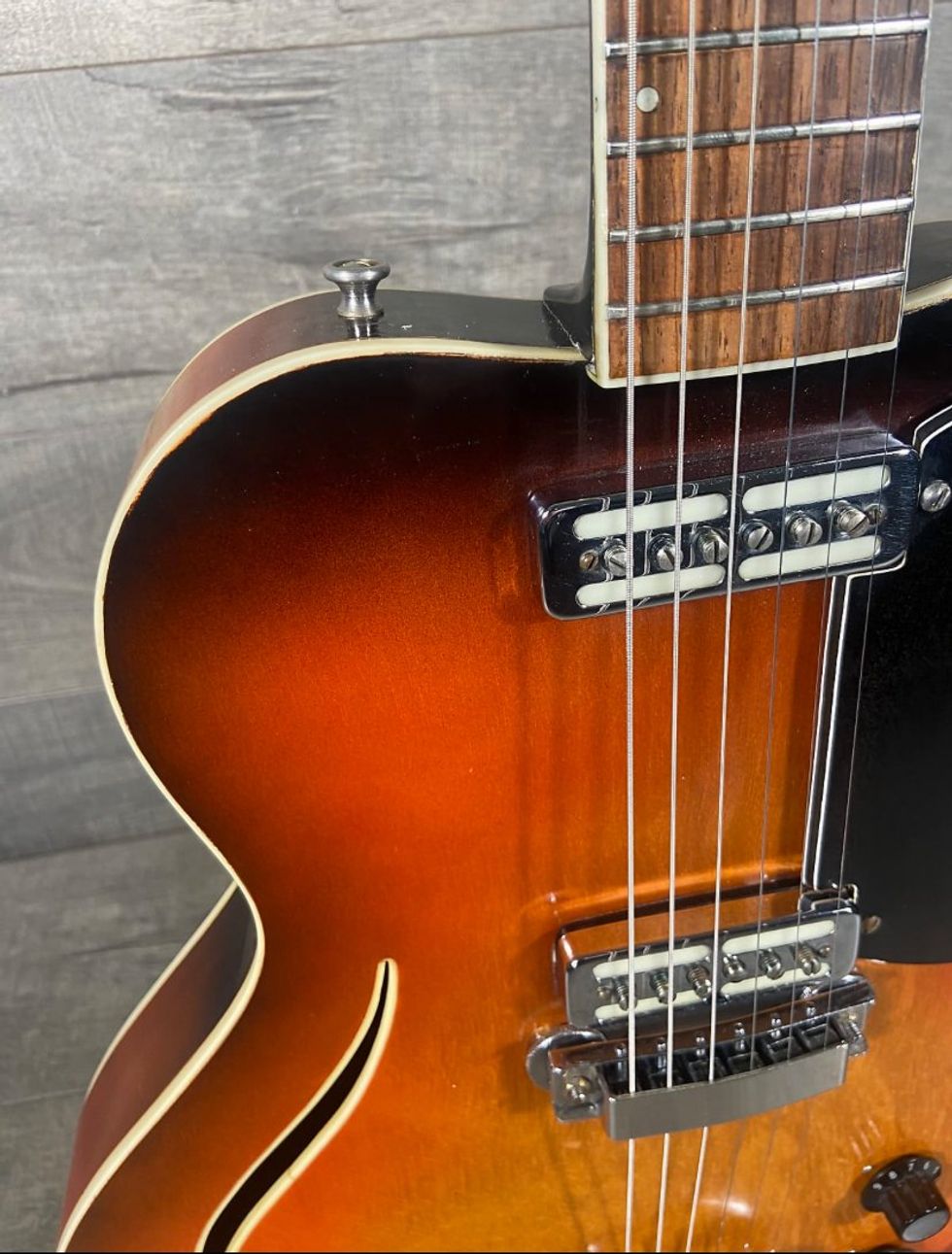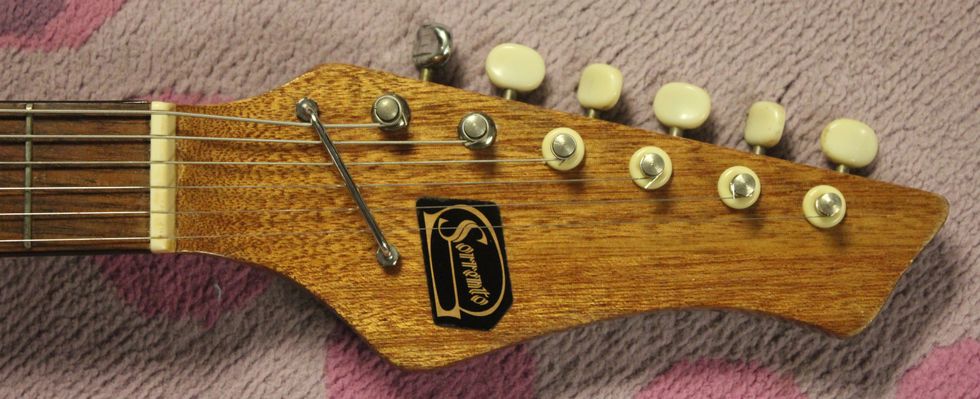On a summer day in 1897, a girl named Lizzie Douglas was born on a farm in the middle of nowhere in Mississippi, the first of 13 siblings. When she was seven, her family moved closer to Memphis, Tennessee, and little Lizzie took up the banjo. Banjo led to guitar, guitar led to gigs, and gigs led to dreams. She was a prodigious talent, and “Kid” Douglas ran away from home to play for tips on Beale Street when she was just a teenager. She began touring around the South, adopted the moniker Memphis Minnie, and eventually joined the circus for a few years.
(Are you not totally intrigued by the story of this incredible woman? Why did she run away from home? Why did she fall in love with the guitar? We haven’t even touched on how remarkable her songwriting is. This is a singular pioneer of guitar history, and we beseech you to read Woman with Guitar: Memphis Minnie’s Blues by Beth and Paul Garon.)
Following the end of World War I, Hawaiian music enjoyed a rapid rise in popularity. On their travels around the U.S., musicians like Sol Ho’opi’i became fans of Louis Armstrong and the New Orleans Rhythm Kings, leading to a great cross-pollination of Hawaiian music with jazz and blues. This potent combination proved popular and drew ever-larger audiences, which created a significant problem: How on earth would an audience of thousands hear the sound from a wimpy little acoustic guitar?
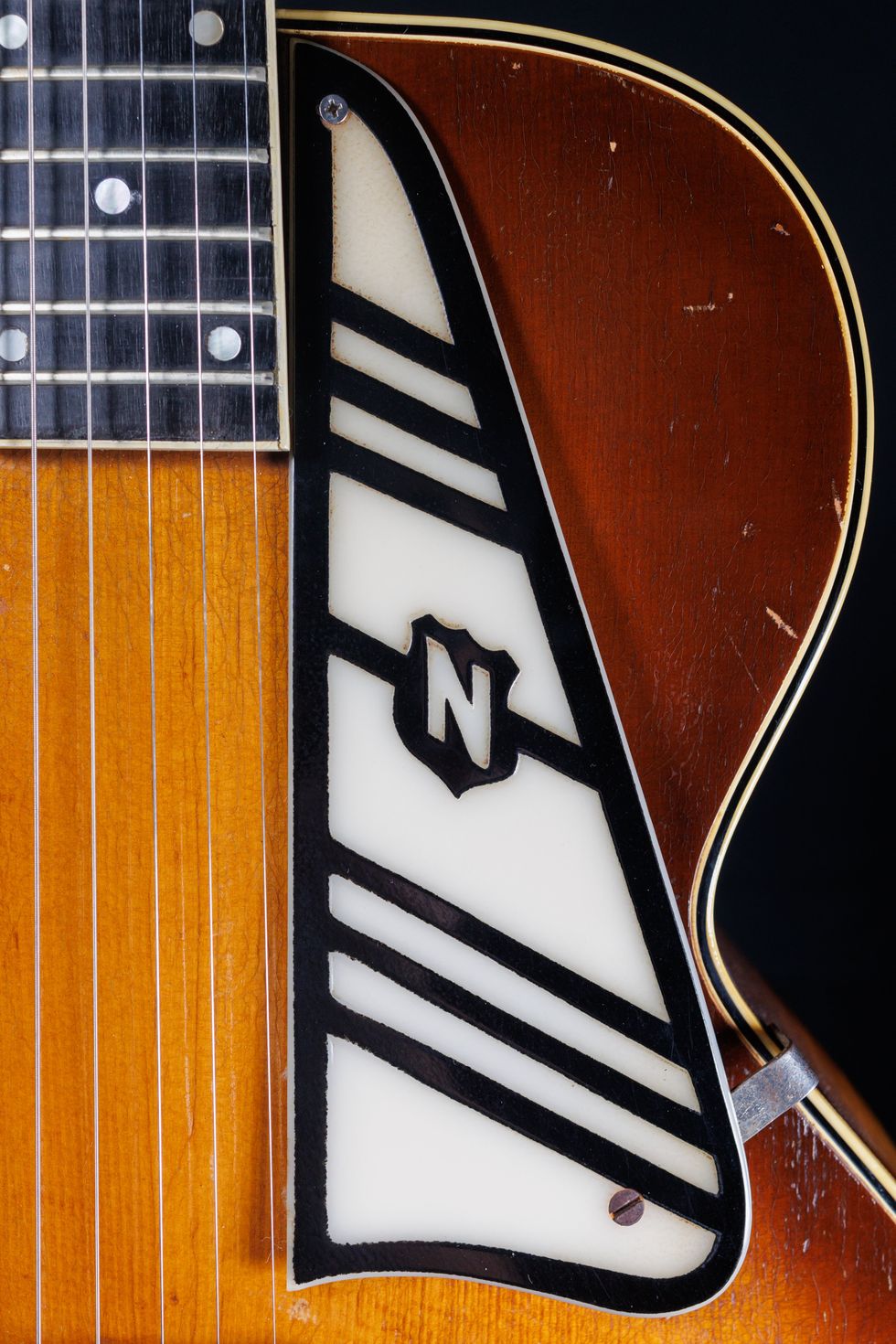
This art deco pickguard offers just a bit of pizzazz to an otherwise demure instrument.
In the late 1920s, George Beauchamp, John and Rudy Dopyera, Adolph Rickenbacker, and John Dopyera’s nephew Paul Barth endeavored to answer that question with a mechanically amplified guitar. Working together under Beauchamp and John Dopyera’s National String Instrument Corporation, they designed the first resonator guitar, which, like a Victrola, used a cone-shaped resonator built into the guitar to amplify the sound. It was definitely louder, but not quite loud enough—especially for the Hawaiian slide musicians. With the guitars laid on their laps, much of the sound projected straight up at the ceiling instead of toward the audience.
Barth and Beauchamp tackled this problem in the 1930s by designing a magnetic pickup, and Rickenbacker installed it in the first commercially successful electric instrument: a lap-steel guitar known affectionately as the “Frying Pan” due to its distinctive shape. Suddenly, any stringed instrument could be as loud as your amplifier allowed, setting off a flurry of innovation. Electric guitars were born!
“At the time it was positively futuristic, with its lack of f-holes and way-cool art deco design on the pickup.”
By this time, Memphis Minnie was a bona fide star. She recorded for Columbia, Vocalion, and Decca Records. Her song “Bumble Bee,” featuring her driving guitar technique, became hugely popular and earned her a new nickname: the Queen of Country Blues. She was officially royalty, and her subjects needed to hear her game-changing playing. This is where she crossed paths with our old pals over at National.
National and other companies began adding pickups to so-called Spanish guitars, which they naturally called “Electric Spanish.” (This term was famously abbreviated ES by the Gibson Guitar Corporation and used as a prefix on a wide variety of models.) In 1935, National made its first Electric Spanish guitar, renamed the New Yorker three years later. By today’s standards, it’s modestly appointed. At the time it was positively futuristic, with its lack of f-holes and way-cool art deco design on the pickup.
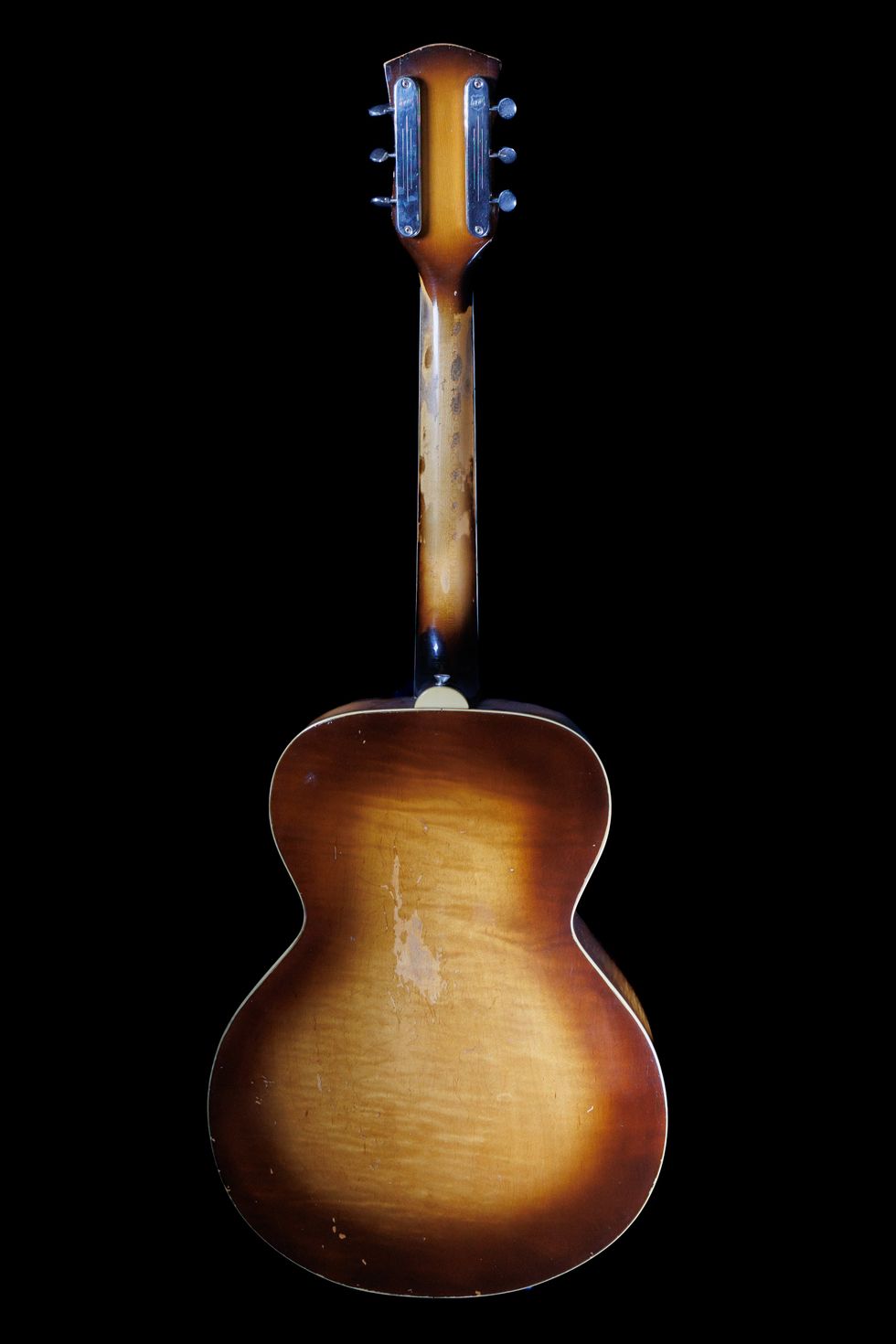
There’s buckle rash and the finish on the back of the neck is rubbed clean off in spots, but that just goes to show how well-loved this guitar has been.
Memphis Minnie had finally found an axe fit for a Queen. She was among the first blues guitarists to go electric, and the New Yorker fueled her already-upward trajectory. She recorded over 200 songs in her 25-year career, cementing her and the National New Yorker’s place in musical history.
Our National New Yorker was made in 1939 and shows perfect play wear as far as we’re concerned. Sure, there’s buckle rash and the finish on the back of the neck is rubbed clean off in spots, but structurally, this guitar is in great shape. It’s easy to imagine this guitar was lovingly wiped down each time it was put back in the case.
There’s magic in this guitar, y’all. Every time we pick it up, we can feel Memphis Minnie’s spirit enter the room. This guitar sounds fearless. It’s a survivor. This is a guitar that could inspire you to run away and join the circus, transcend genre and gender, and leave your own mark on music history. As a guitar store, watching guitars pass from musician to musician gives us a beautiful physical reminder of how history moves through generations. We can’t wait to see who joins this guitar’s remarkable legacy.
SOURCES: blackpast.org, nps.gov, worldmusic.net, historylink.org, Memphis Music Hall of Fame, “Memphis Minnie’s ‘Scientific Sound’: Afro-Sonic Modernity and the Jukebox Era of the Blues” from American Quarterly, “The History of the Development of Electric Stringed Musical Instruments” by Stephen Errede, Department of Physics, University of Illinois at Urbana-Champaign, IL.
